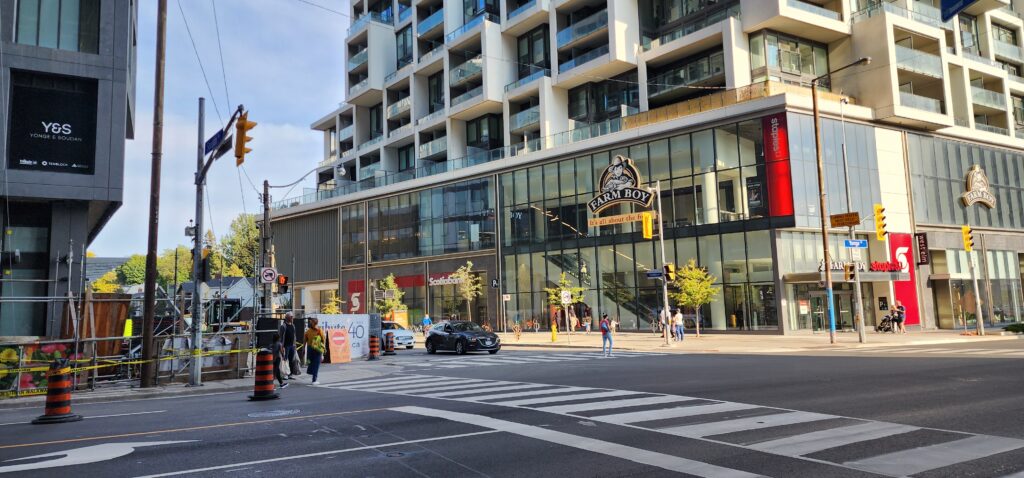
Listen to the whole story:
Toronto is launching its first rat response plan, a citywide strategy to tackle a growing rodent problem. Approved by city council in late July, the plan is Toronto’s most comprehensive attempt yet to curb rat infestations. But its effectiveness will be determined once implementation begins in 2026.
“It’s too early to tell,” said Jay Vash, a technician at GTA Exterminators, a pest control company. “The plan has some promising steps, but we’ll need time and data to see how effective it really is.”
A Coordinated Approach
Instead of relying solely on extermination, the city will shift to an integrated pest management approach — removing rats’ access to food, water and shelter — and weaving that strategy into how Toronto builds, cleans, and enforces its bylaws.
Starting in mid-2026, a new rat response coordination team will link multiple city divisions so that rodent hot spots get a unified response rather than fragmented fixes.
According to Carleton Grant, Toronto’s outgoing executive director of municipal licensing and standards, the goal is to move from a reactive stance to a proactive one.
The new team will “align efforts, share best practices and monitor progress on actions that reduce the conditions that support rat populations,” Grant said.
When rat complaints spike, inspectors will launch targeted “rat blitzes” — periods of intensified inspection, enforcement and public education — to snuff out infestations faster.
Construction sites, often blamed for driving rodents into nearby areas, are another major focus of the plan. The city will require formal rat management plans for all its own construction projects and encourage private developers to do the same, according to Grant.
He said this means taking steps such as trapping rats before excavation begins, so digging doesn’t simply evict rodents into surrounding neighbourhoods.
Enforcement tools are also being strengthened. As part of an ongoing property standards bylaw review, staff are looking to speed up the timeline for bylaw officers to ticket property owners who fail to control pests on their premises, Grant said.
The city’s plan could be bolstered with some additional on-the-ground tactics, according to Vash.
“One key improvement would be placing rodent bait stations not just on construction sites, but also in the surrounding areas, since rats tend to spread out when disturbed,” he said.
“Stronger enforcement, ongoing monitoring and public education would also help strengthen the plan.”
Prevention Must Start Early, Experts Say
According to another pest management expert, prevention is crucial.
“Preventing and reducing a rodent population prior to construction, and then monitoring afterward, is very effective at mitigating their movement,” said Greg Mulroney, executive director of the Structural Pest Management Association of Ontario.
He urges municipal governments, homeowners and developers to use an integrated approach — combining improved sanitation and building maintenance with diligent monitoring and targeted trapping.
There is “no quick knockdown” for urban rat infestations, Mulroney warned, only ongoing management.
According to the city’s plan, a public education campaign will launch in early 2026 (including a new pest-prevention website), and by mid-2026 it will begin testing non-rodenticide controls, such as carbon monoxide burrow treatments, electric “smart” traps and remote sensors, to see if they reduce rat populations without harming other wildlife.
By late 2026 into early 2027, officials will analyze data from 311 complaints, bylaw inspections and public health reports to pinpoint the worst rodent infestation hotspots, the city says.
Residents Already Feeling the Strain
Andrea Woodford, who lives near the Eglinton Crosstown LRT construction, said seeing rats scurrying around the excavation site “was like watching a rat zoo,” as they darted out of “little holes and pathways” every few seconds.
Last month, a Farm Boy grocery store at Yonge Street and Eglinton Avenue was shut down after inspectors found rodents and droppings. Local exterminators confirm these observations. “From August 2024 to July 2025, phone calls increased by 35 per cent compared to the previous year,” Vash said.
He said that neighbourhoods with aging infrastructure, abundant garbage or food waste or in close proximity to ravines and parks tend to be rodent hot spots.
“Condo digs act like a giant eviction notice for rodents, forcing them into new areas,” Vash said.
Rats are generally more of a nuisance than a major disease threat, according to Brian Thompson, a spokesperson for Toronto Public Health. However, rats infesting restaurants or grocery stores can contaminate food and cause illness, he said in an emailed statement.
Outside of food-related settings, provincial authorities treat rats more as a nuisance than a public health threat, Thompson said. Indeed, the city’s plan acknowledges that eradicating rats entirely is impossible.
Residents should see “a reduction in rodent complaints, faster response times and visible improvements in cleanliness and property maintenance,” Grant said.
No AI tools were used in the production of this piece.

